Mad Hedge Biotech and Healthcare Letter
March 20, 2025
Fiat Lux
Featured Trade:
(WHEN SILENCE IS GOLDEN)
(ALNY), (PFE)

Mad Hedge Biotech and Healthcare Letter
March 20, 2025
Fiat Lux
Featured Trade:
(WHEN SILENCE IS GOLDEN)
(ALNY), (PFE)

Two scientists walk into a bar. One says, "I've got a funny story about a worm." The other replies, "Hold my Nobel Prize."
This isn't just a setup for a punchline - it's actually a key part of a recent groundbreaking discovery that's just earned Victor Ambros from UMass Chan Medical School and Gary Ruvkun from Harvard Medical School the 2024 Nobel Prize in Physiology or Medicine.
In a nutshell, these two have just been crowned the rock stars of RNA research for 2024 for uncovering the secrets of microRNA. It's like they've found the Rosetta Stone of gene regulation, and boy, is it a game-changer.
Now, you might be thinking, "John, haven't we been down this RNA road before?" And you'd be right. Just last year, the Nobel folks were gushing over mRNA vaccines. But this year's prize? It's a whole different ballgame.
For years, we thought we had gene regulation all figured out. Genes make mRNA, mRNA makes proteins, and proteins run the show. Simple, right? Well, Ambros and Ruvkun just blew that notion out of the water.
Their breakthrough came from an unlikely source - a tiny worm called C. elegans. This little nematode might not look like much, but it's been the workhorse of biology for decades.
Ambros and Ruvkun were puzzling over some mutant worms that couldn't get their growth spurts right. One type was growing too big, the other too small.
After years of head-scratching and late nights in the lab, they stumbled upon something extraordinary. They found that a gene called lin-4 wasn't making a protein at all.
Instead, it was cranking out a small piece of RNA that could stick to another gene's mRNA and shut it down. This was microRNA, and it was about to turn the world of molecular biology on its head.
At first, everyone thought this was just some quirky worm thing. But seven years later, Ruvkun's team found another microRNA that showed up not just in worms but in everything from fruit flies to humans.
Suddenly, microRNA wasn't just a biological oddity - it was a universal regulator of genes.
Fast forward to today, and we now know that humans have over 1,000 different microRNAs. These tiny molecules are pulling the strings on virtually every gene in our bodies. It's like discovering a whole new layer of cellular bureaucracy we never knew existed.
Now, you might be wondering, "That's all well and good, but what's it got to do with making money?" Well, let me tell you, this discovery has set off a gold rush in the biotech world.
Companies are scrambling to turn this basic science into cold, hard cash.
Take Regulus Therapeutics (RGLS), for instance. They're working on a treatment for polycystic kidney disease that targets microRNA-21. It's early days, but the potential is enormous.
Then there's Alnylam Pharmaceuticals (ALNY). These folks have already brought RNA-based therapies to market.
Their drug, ONPATTRO, is treating a rare disease called hereditary transthyretin-mediated amyloidosis. It's proof that RNA-targeted treatments aren't just pie in the sky - they're real, and they're here.
Big Pharma is getting in on the action, too. Roche (RHHBY) bought up a company called Santaris Pharma back in 2014, snagging some nifty technology for developing microRNA therapies.
Novartis (NVS) and AstraZeneca (AZN) are also dipping their toes in the microRNA waters. And let's not forget about Qiagen (QGEN). They're not developing therapies, but they're selling the picks and shovels for this gold rush - tools for microRNA research and diagnostics.
Now, I'm not saying you should go all-in on microRNA stocks tomorrow. This is cutting-edge science, and the road from the lab bench to the pharmacy shelf is long and treacherous. But for those of you with an appetite for risk and a long-term view, this could be the next big thing in biotech.
So the next time someone corners you at a party with a story about microscopic organisms, maybe don't rush to the bar just yet. Remember, Ambros and Ruvkun weren't trying to create the next blockbuster drug. They were just curious about some weird-looking worms. Who would have thought their discovery could end up revolutionizing medicine?
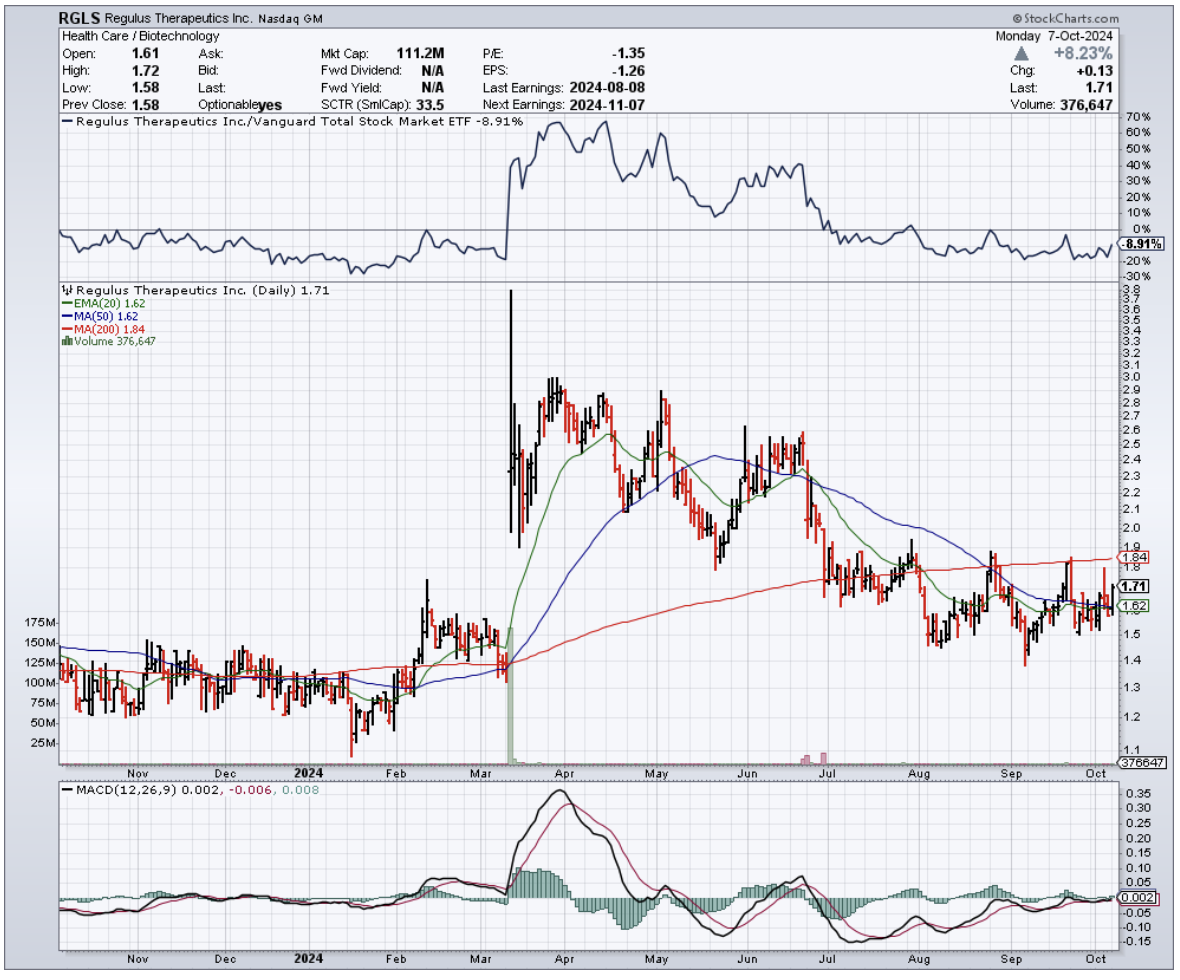
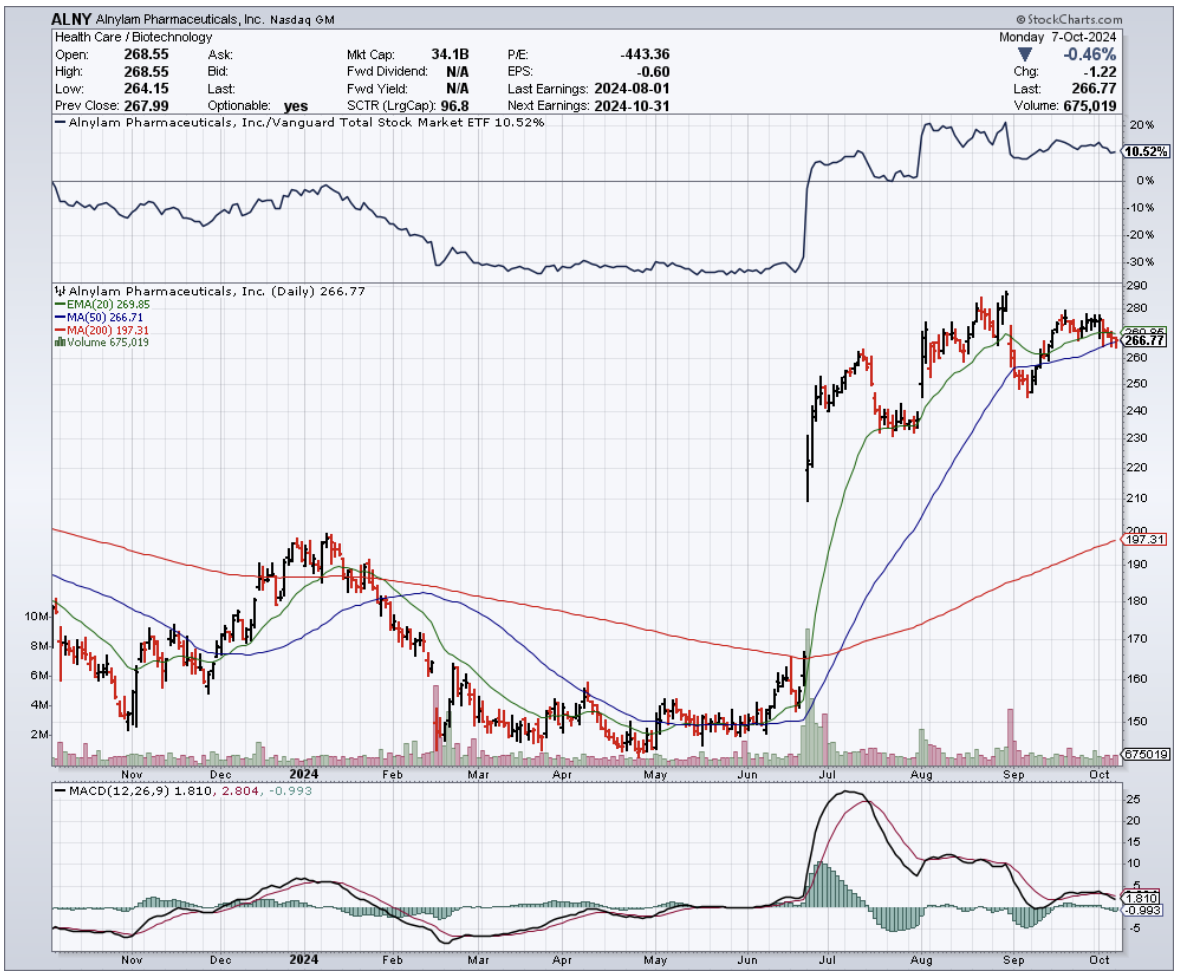
Mad Hedge Biotech and Healthcare Letter
October 8, 2024
Fiat Lux
Featured Trade:
(THE LITTLE RNA THAT COULD)
(RGLS), (ALNY), (RHHBY), (NVS), (AZN), (QGEN)

Mad Hedge Biotech and Healthcare Letter
July 16, 2024
Fiat Lux
Featured Trade:
(SMALL GIANTS RISING)
(GMAB), (OPHLY), (VRTX), (INCY), (BIIB), (AHKSY), (ALNY), (ARGX), (BGNE), (MRNA), (NBIX), (BNTX), (IPSEY), (CTLT), (NVO), (LLY), (JNJ), (GILD), (ABBV), (MRK), (SNY), (BMY), (GSK)

Remember when David took down Goliath? Well, history's repeating itself in the biotech arena, and this time, David's got deep pockets and a Ph.D.
Since April, I've been watching a trend on the so-called "next-generation" players in biotech and healthcare world. It reminds me of the massive changes I witnessed in Asian markets back in the '70s.
Over the past months, companies like Genmab (GMAB), Ono Pharmaceutical (OPHLY), Vertex (VRTX), Incyte (INCY), Biogen (BIIB), and Asahi Kasei (AHKSY) have been making waves that would impress even the most seasoned surfer. And these next-gen dealmakers aren't just dipping their toes in the M&A pool - they're doing cannonballs.
With cash reserves that would make Scrooge McDuck blush, these companies are overturning industry norms, already joining the prestigious $100 billion market cap club. At this celebration, the champagne flows freely.
So, what’s the play here?
With IPOs cooling down like day-old coffee, companies eyeing public debuts are now ripe targets for acquisition, more tempting than a juicy peach.
This fresh class of biotechs, unphased by the FTC's scrutiny that acts like kryptonite to pharma giants, are acting more like rocket fuel for these agile consolidators.
They slide through regulatory gaps faster than a greased pig at a county fair, grabbing six out of ten biopharma M&A deals in the second quarter alone. They’re not just taking a slice of the pie—they’re rewriting the recipe.
And if we're talking about firepower? These newcomers boast an average of $3.8 billion in pro forma adjusted cash, which isn't just walking-around money — that's "buy a small country" money.
But don't think for a second that this cash is just sitting pretty in their coffers. These upstarts are putting their money where their mouth is.
Take Incyte, for instance. They flexed their financial muscle with a $2 billion buyback in May 2024, sending a clear message to the market: "We're here to play, and we're playing to win."
And that's just the tip of the iceberg. The industry as a whole is lounging on a cool $1.5 trillion. That's enough liquidity to stretch the imagination — perhaps even to purchase a small planet. Mars, anyone? Elon might give us a discount.
But this financial might isn't just about buying power – it's about survival. As I said before, Big Pharma is teetering on a patent cliff that threatens to erode their revenue streams. To stay competitive, they're scrambling to replenish their pipelines, acquiring promising assets and gobbling up innovative technologies with the voracity of Pac-Man on steroids. And it's not just the usual suspects making moves.
This sense of urgency has created a fertile ground for an emerging cohort of aggressive dealmakers. Companies like Alnylam (ALNY), argenx (ARGX), BeiGene (BGNE), Moderna (MRNA), Neurocrine Biosciences (NBIX), BioNTech (BNTX), and Ipsen (IPSEY) are biting off more than the market expected them to chew, and they're coming to the table hungry.
And these companies aren't just nibbling around the edges. They're making bold moves, acquiring cutting-edge biotech firms with promising pipelines. We're talking oncology, epilepsy, kidney diseases, cardiovascular plays – it's like someone turned a medical textbook into a shopping catalog.
In fact, even the big boys are flexing their muscles.
Novo Holdings (NVO) dropped a jaw-dropping $16.5 billion on Catalent (CTLT). That's not even for a drug - it's for manufacturing. Talk about betting on the picks and shovels in this biotech gold rush.
Eli Lilly (LLY) just plunked down $3.2 billion on Morphic Therapeutic (MORF), betting big on inflammation, immunity, and oncology.
Johnson & Johnson's (JNJ) been on a shopping spree, too, snagging Numab's Yellow Jersey for $1.25 billion and Proteologix for $850 million. Both plays in inflammation and immunity - clearly, they've found their sweet spot.
Biogen's not twiddling its thumbs either, striking a deal with HI-Bio worth up to $1.8 billion.
Not to be outdone, Gilead (GILD) shook hands with CymaBay Therapeutics to the tune of $4.3 billion. Even AbbVie (ABBV), playing it cooler, still dropped a cool $250 million on Celsius.
Meanwhile, Merck's (MRK) set its sights on EyeBio for up to $3 billion, focusing on ophthalmology.
Sanofi (SNY), Bristol Myers Squibb (BMY), GSK (GSK) - they're all in, placing their chips on everything from rare diseases to generics to asthma. Clearly, the Big Pharma giants are also trying to keep up with this shift.
As the biotech field evolves, watching these underdogs will be like watching history in the making — where today's Davids become tomorrow's Goliaths. I suggest you keep a close eye on the names above. Adding them to your portfolio would mean you’re not just watching the giants rise — you’ll be a part of the story.
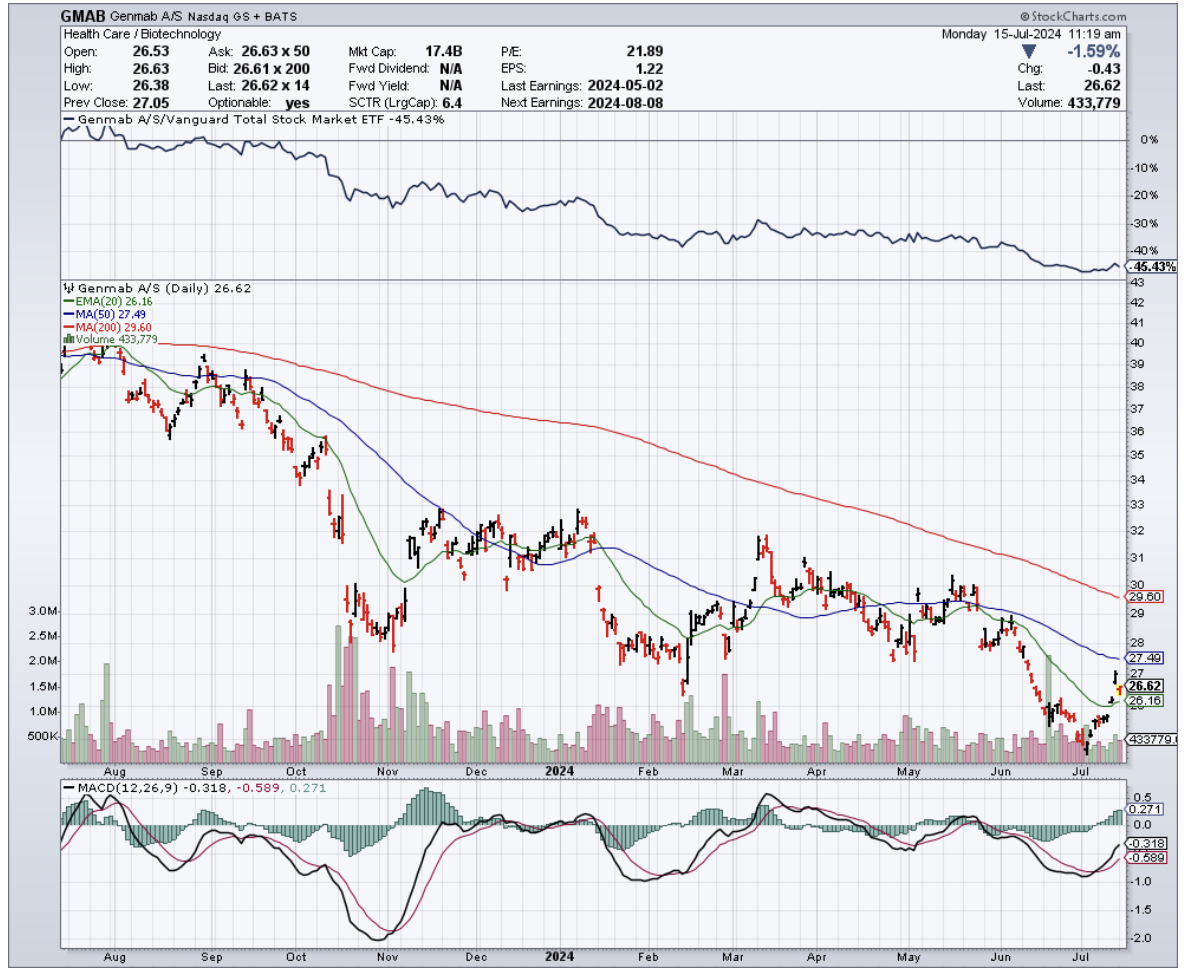
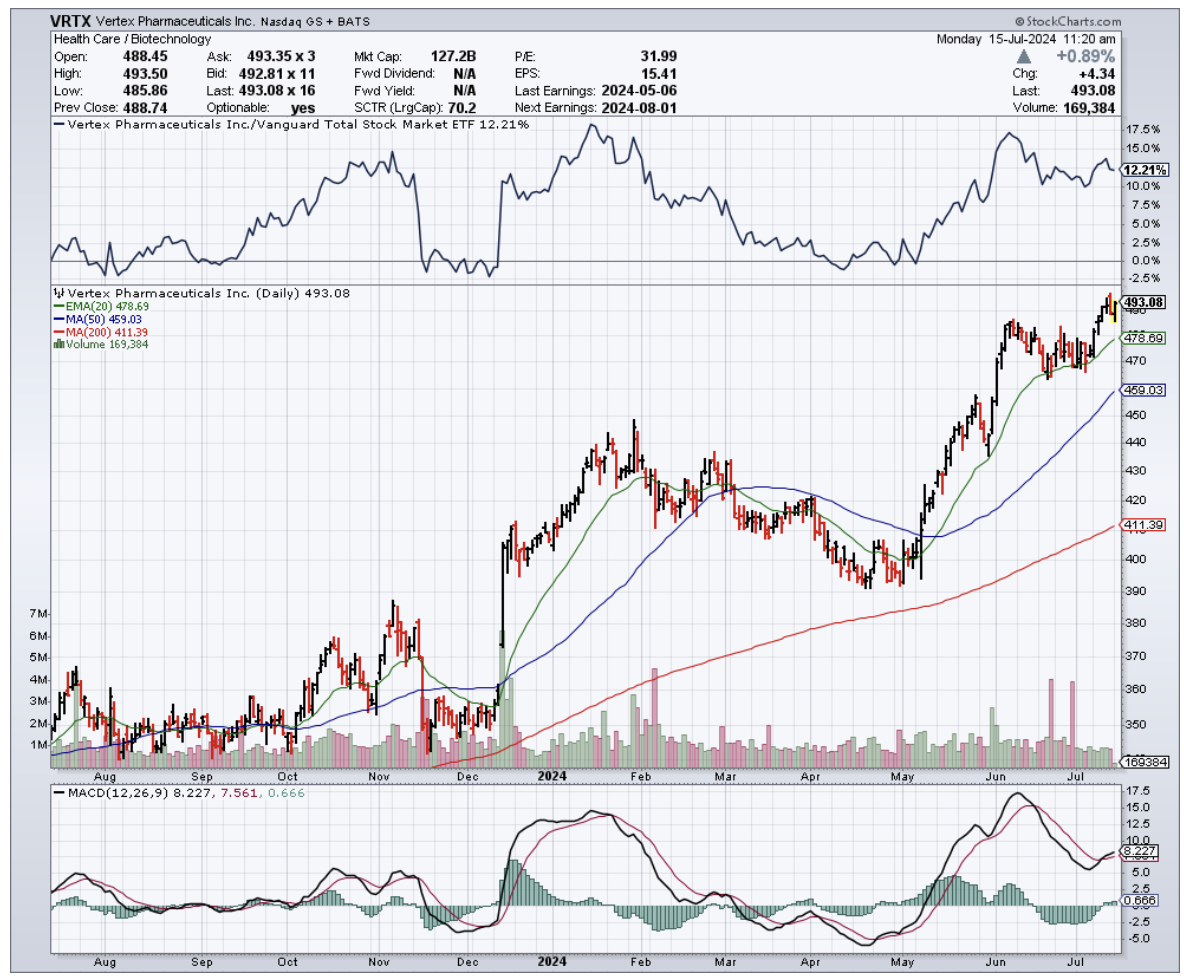
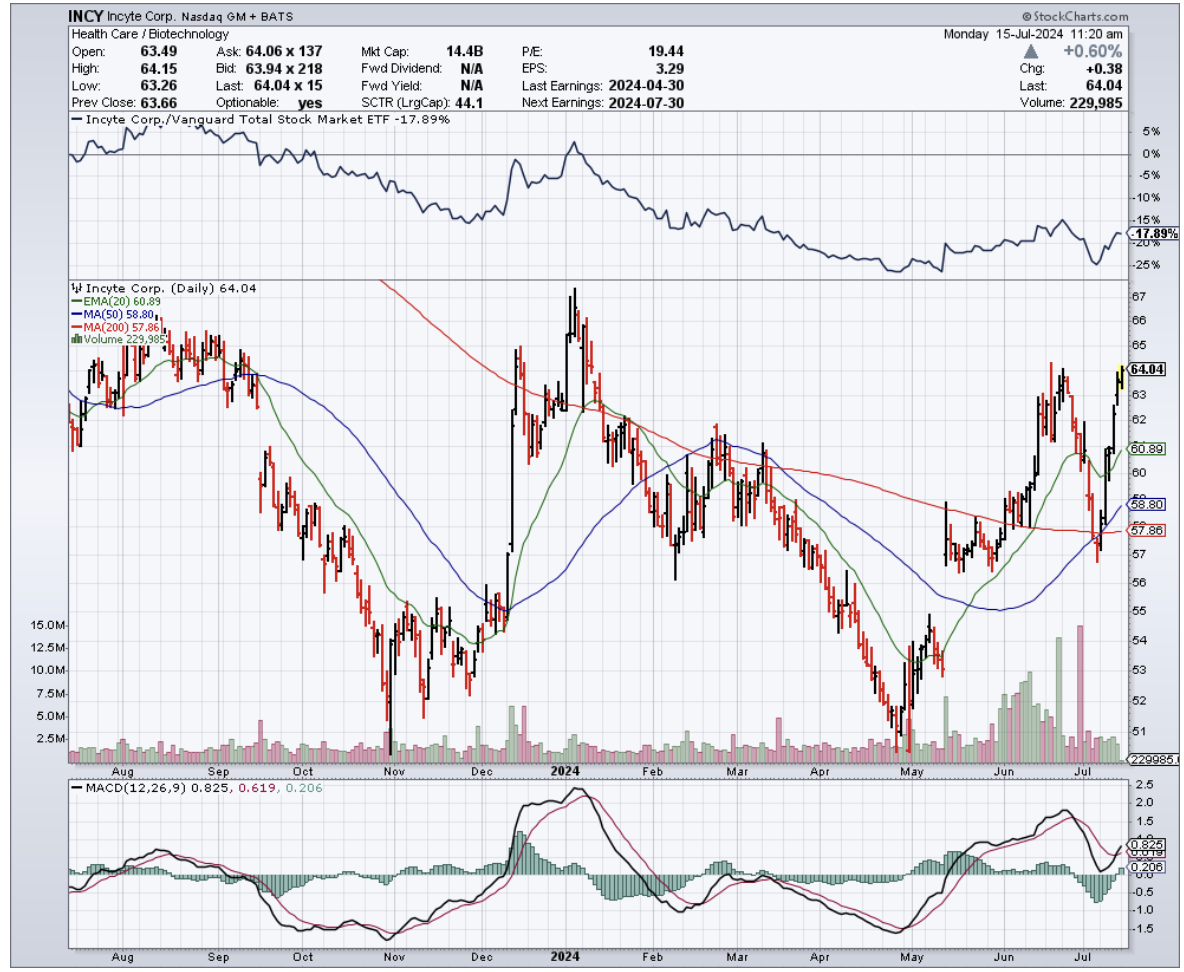
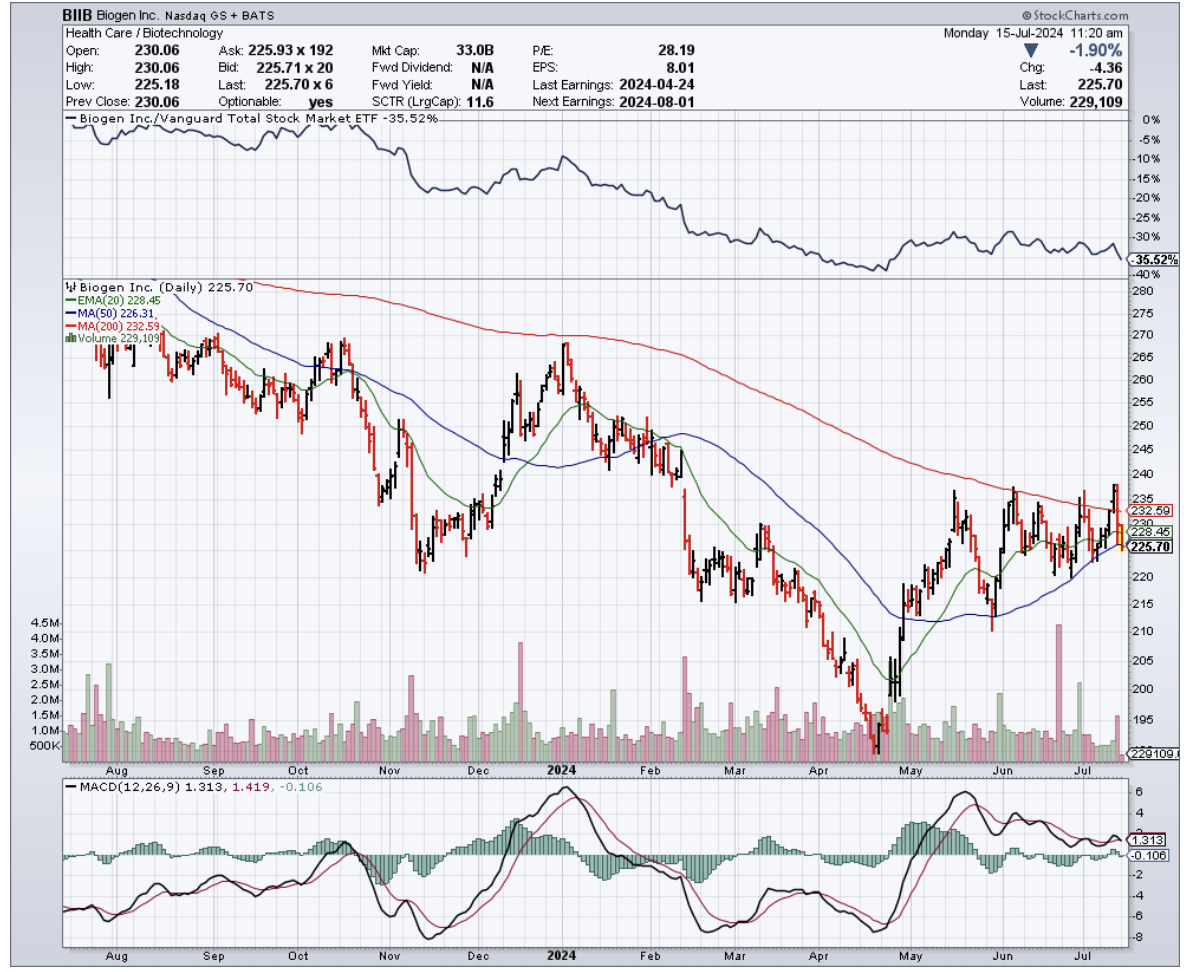
Mad Hedge Biotech and Healthcare Letter
January 30, 2024
Fiat Lux
Featured Trade:
(BRAIN GAINS)
(BIIB), (ESALY) (LLY), (REGN), (ALNY), (MRK), (AMGN), (PFE), (BMY)

Let's talk about a golden opportunity knocking at our doors – the booming market of Alzheimer's disease treatments in biopharma. We're not just talking about a small uptick here. With a slew of new meds on the horizon, this market is gearing up for some serious growth, and you might want to grab a piece of this pie.
The dominant name on our radar is Biogen (BIIB), ticking at $260 per share with a market cap that's flirting with $39 billion.
Now, with a solid $10 billion in sales and trading at a nifty 16 times its 2024 estimated earnings, Biogen's got some serious mojo. I've been eyeing it since last year, but boy, have things changed since then.
A critical game-changer was Chris Viehbacher, the new CEO since November 2022. He's already played a couple of aces – slicing $800 million in costs (which, by the way, could pump up earnings by $5 a share by 2025) and wrapping up the acquisition of Reata Pharmaceuticals in September 2023.
This new addition to Biogen’s portfolio has a hot ticket item, Skyclarys, for treating Friedreich’s ataxia. It's a rare find, but it could add a cool $5 per share in earnings in a few years.
But the most exciting name in Biogen’s arsenal is Leqembi, the company’s Alzheimer’s treatment. They're splitting the pot with Eisai (ESALY), and this drug is a little like turning back the clock on cognitive decline – think a two-year rewind button.
The big bucks talk here: we're eyeballing $2 billion in revenue by 2028 and maybe a whopping $4 billion by 2033. And hey, there might even be more where that came from.
Let's chew on a few things here. Biogen has the potential to snag a 60% market share against Eli Lilly’s (LLY) donanemab – the only worthy opponent in the market so far. And given Leqembi's safety creds, this might be playing it safe.
Aside from Eli Lilly, there’s Roche (RHHBY), with candidates in Phase 2 and Phase 1 trials, but they're not quite hitting the jackpot yet. As for other competitors in the space like Regeneron (REGN) and Alnylam (ALNY)? Well, they're cooking up something different in Phase 1, but it's a bit early to call.
Meanwhile, Biogen's got another trick – a home-use version of Leqembi coming this fall. And get this: doctors are buzzing about nipping Alzheimer’s in the bud, way before it crashes the party. Imagine getting a jab of Leqembi as part of your routine check-up when you're only 50. If this works, then we could be kissing Alzheimer’s goodbye by 2040.
For the longest time, Biogen was like that one-hit wonder with its multiple sclerosis treatments. But now, they're swinging for the fences with the largest unmet health need out there. If Leqembi hits it big, and I mean really big, we could be talking about sales far beyond that $4 billion mark by 2033.
But let's not get ahead of ourselves. The big pharma world is about to hit a few speed bumps with a wave of patent cliffs from 2025 to 2029. That’s a headache for the likes of Merck (MRK), Amgen (AMGN), Pfizer (PFE), and Bristol Myers Squibb (BMY).
Biogen, though, is sitting pretty with two growth products and a pipeline that’s got pizzazz. Plus, they're a hot catch for any big pharma looking for a dance partner without stepping on regulatory toes.
As we roll into the next decade, keep your eyes peeled for investment opportunities popping up like daisies. And don't feel like you've got to jump on the first bandwagon that rolls by. This market's just stretching its legs, and today's champs might just be tomorrow's old news.
So, what's the smart play here? Spread your bets across a few horses in the Alzheimer's race, and make sure they're not one-trick ponies.
Eli Lilly, for instance, is more than just an Alzheimer's bet – they're making waves in diabetes and soon, obesity treatments. Biogen, despite its Alzheimer's experience, is a bit of a gamble, especially after its first drug's rocky start.
Remember, investing in Alzheimer's treatments now is like catching the early wave – it's riskier, sure, but the potential for a big payoff is there. This is an emerging market, and it's revving up for an exciting ride. I suggest you add these names to your watchlist.
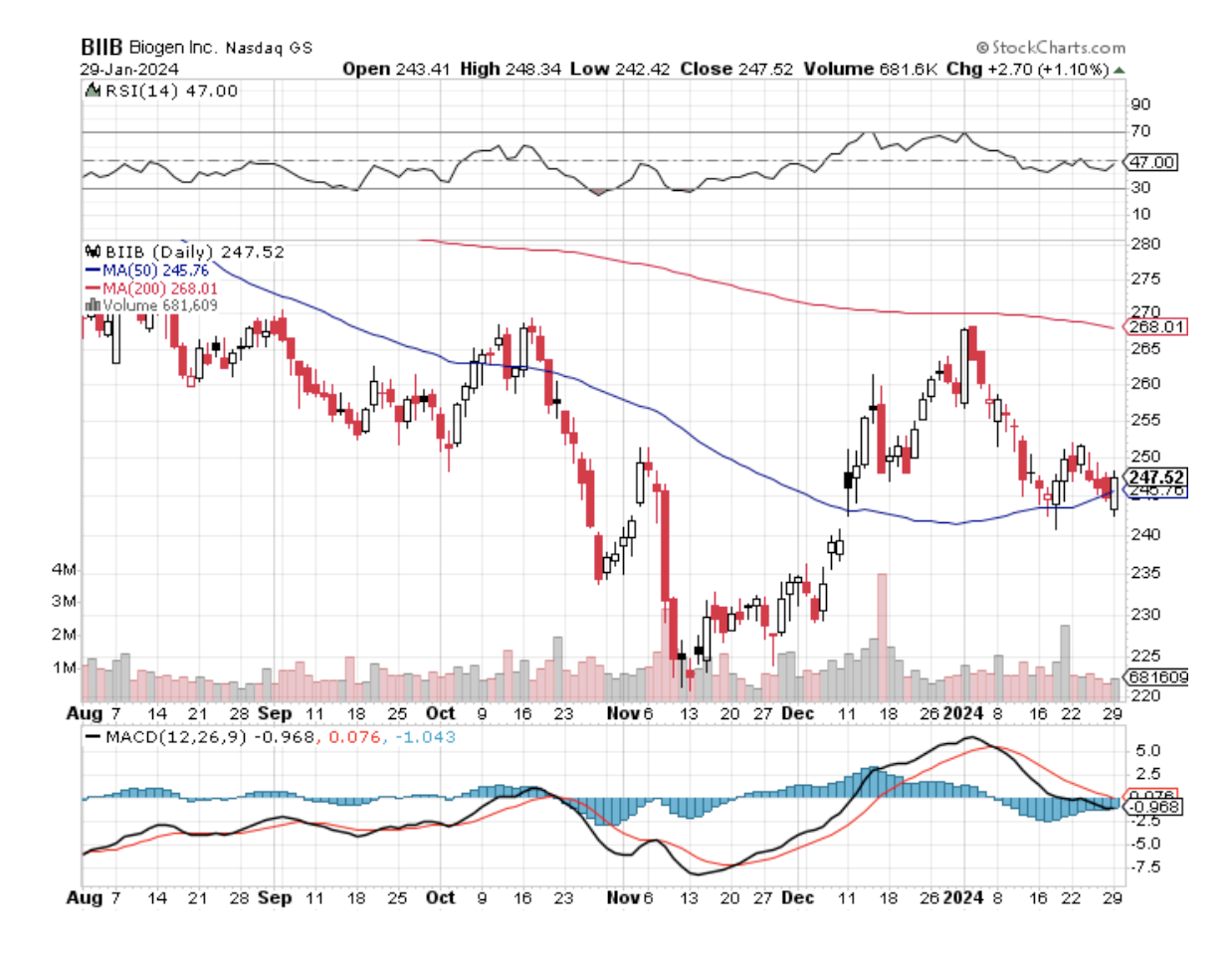
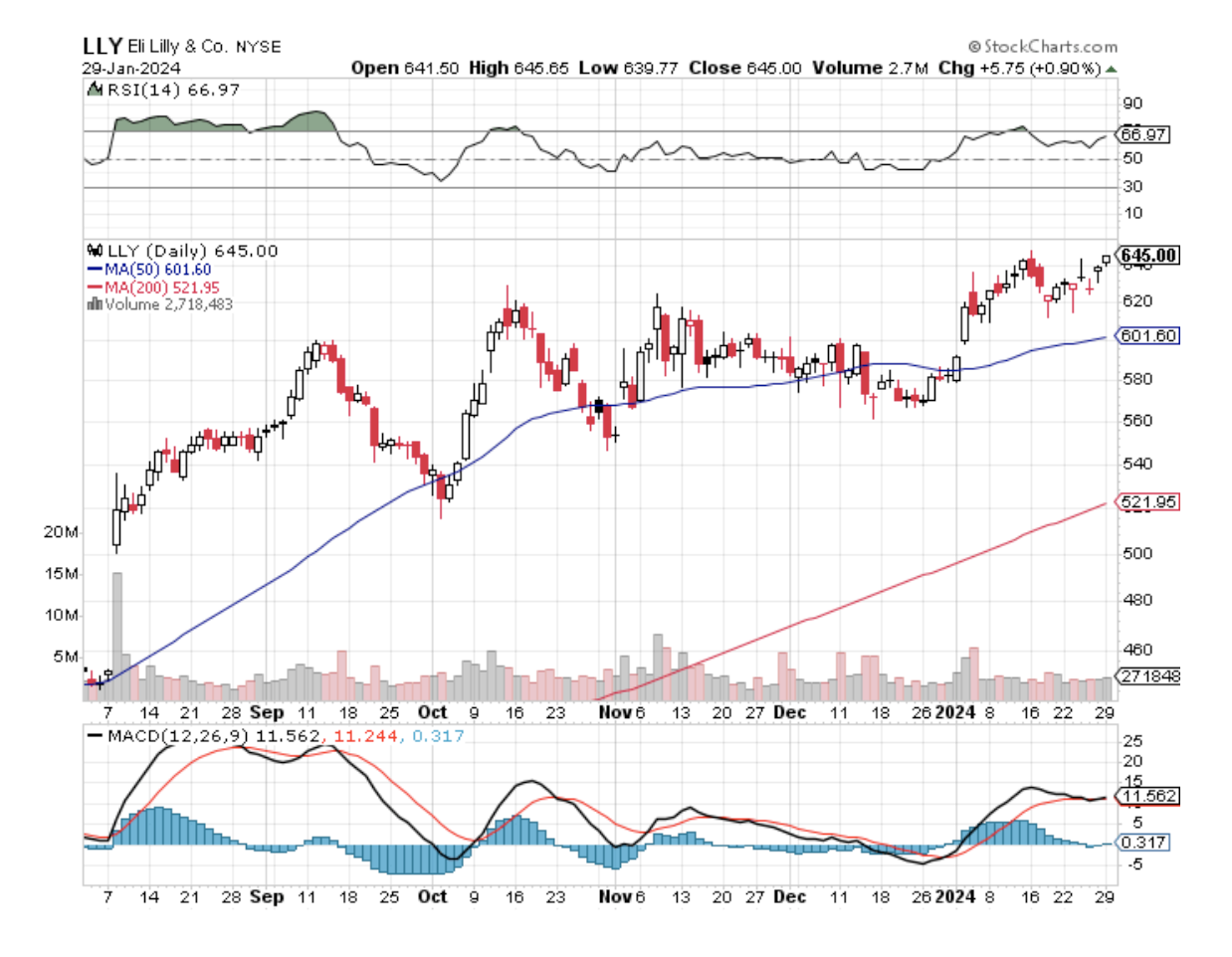
Mad Hedge Biotech and Healthcare Letter
September 22, 2022
Fiat Lux
Featured Trade:
(GOOD THINGS COME TO THOSE WHO WAIT)
(NTLA), (IONS), (TAK), (CRSP), (EDIT), (CRBU), (BEAM), (ALNY), (PFE), (REGN)

CRISPR technology has been receiving so much hype over the past years. However, the promise of this gene editing platform has yet to be realized.
Crispr gene-editing therapies can apply permanent modifications to our DNA by zeroing in on specific genes and then incapacitating them or reworking harmful segments of their genetic instructions.
While this could change in the coming years, investors have become impatient with the progress and lack of any major breakthrough in genomics. Some are losing confidence that this sector could experience explosive growth.
This is what happened with Intellia Therapeutics (NTLA).
Earlier this week, the company showed data that patients who received a one-time gene-editing infusion exhibited sustained improvement in a genetic condition that can result in fatal swelling when left untreated.
To be more specific, Intellia’s update means it could deliver a potentially permanent solution for hereditary angioedema. In this condition, a patient has a miswritten gene in their liver cells that produces a specific protein that triggers a dangerous swelling throughout the body.
Applying the treatment to 6 patients, Intellia’s one-time treatment lowered blood levels of the harmful proteins by more than 90% and decreased the swelling.
This is a more notable effect than the results from existing drugs like Takhzyro from Ionis Pharmaceuticals (IONS) and Takeda Pharmaceutical (TAK).
Despite the encouraging update, Wall Street still spurned the stock, and its price fell.
It looks like investors have lost patience with the slow progress of clinical studies in genetic treatments, pushing some to take advantage of the positive news from Intellia to abandon their positions.
Actually, it’s not only Intellia that suffered from this mistreatment by the market. Investors have also been dumping other stocks utilizing the Nobel-prize-winning technology, Crispr-Cas9, including CRISPR Therapeutics (CRSP), Editas Medicine (EDIT), Caribou Biosciences (CRBU), and Beam Therapeutics (BEAM).
Intellia was hailed the top CRISPR stock in 2021 when the company and its co-collaborator, Regeneron (REGN), shared their promising interim results from a Phase 1 study assessing NTLA-2001, a treatment for a rare genetic disease called transthyretin (ATTR) amyloidosis.
This Crispr infusion candidate managed to knock out rogue genes in the liver cells of 12 patients, halting ATTR’s poisonous effects on their hearts or nerves. Based on clinical data, Intellia’s therapy caused an over 90% drop in the fatal protein triggered by the genetic condition.
If successful, this one-and-done ATTR treatment from Intellia would go head-to-head against other chronic drug therapies like Onpattro by Alnylam Pharmaceuticals (ALNY) or Pfizer’s (PFE) Vyndagel, which generates $2 billion in sales every year.
Many companies use Crispr technology to edit human genomes in an effort to treat and possibly even cure rare genetic diseases. Their treatments typically utilize either an ex vivo or an in vivo approach. With ex vivo therapies, the genes are altered outside the patient’s body.
However, Crispr’s use is not only limited to targeting genetic conditions. There are also gene-editing companies that are working on leveraging the technology to come up with treatments for various kinds of cancer.
In particular, Crispr technology has been a biotech favorite in the development of chimeric antigen receptor T-cell or CAR-T therapies. There are used to genetically engineer immune cells to target specific tumors.
Apart from these, some biotech companies are using Crispr technology to conduct screening. This is different from genetic testing, though.
When using Crispr for screening, the genes are modified in a manner that makes them nonfunctional or inoperative. Crispr screening allows biotechs to explore which genes take on particular functions, which can be critical in the development of drugs and treatments.
Intellia’s recent updates are clear indications that Crispr technology works. Since this will be applied to humans, we should expect the timeline and adaptation to take longer.
I have become more and more thrilled with developments in the gene editing space. Moreover, I believe it’s no longer about “if” but when it will happen.
Overall, the gene editing sector is not for fast-paced investors. This is for those willing to wait for a very long time, particularly for stocks like Intellia Therapeutics.
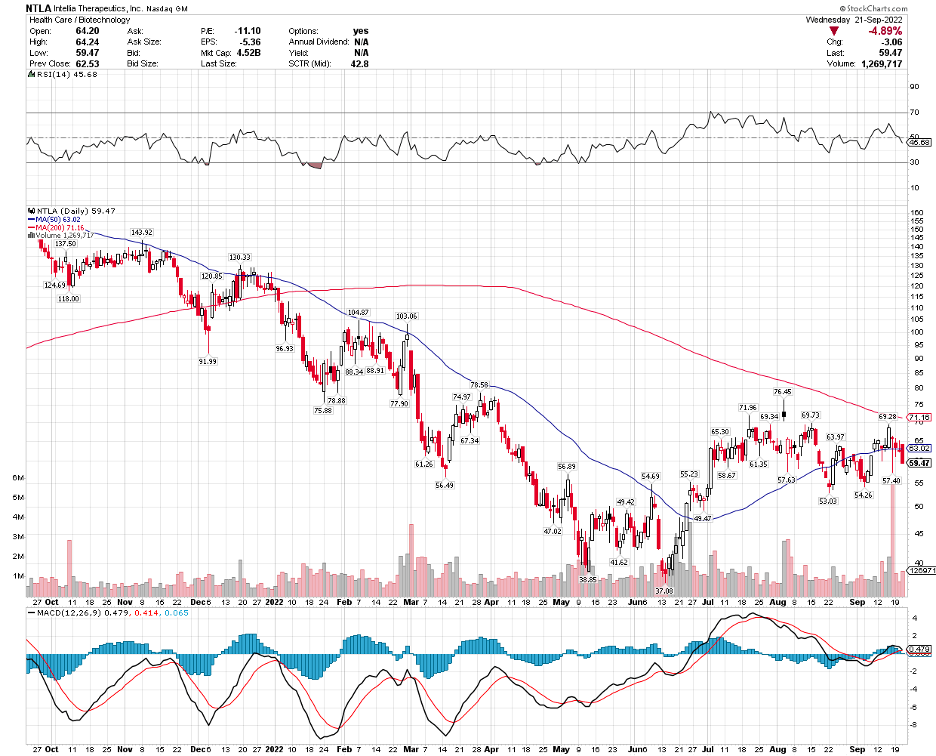
Mad Hedge Biotech and Healthcare Letter
September 13, 2022
Fiat Lux
Featured Trade:
(A CROWN JEWEL SCORES A GOAL)
(REGN), (BAYRY), (RHHBY), (SNY), (ALNY), (NTLA)

Legal Disclaimer
There is a very high degree of risk involved in trading. Past results are not indicative of future returns. MadHedgeFundTrader.com and all individuals affiliated with this site assume no responsibilities for your trading and investment results. The indicators, strategies, columns, articles and all other features are for educational purposes only and should not be construed as investment advice. Information for futures trading observations are obtained from sources believed to be reliable, but we do not warrant its completeness or accuracy, or warrant any results from the use of the information. Your use of the trading observations is entirely at your own risk and it is your sole responsibility to evaluate the accuracy, completeness and usefulness of the information. You must assess the risk of any trade with your broker and make your own independent decisions regarding any securities mentioned herein. Affiliates of MadHedgeFundTrader.com may have a position or effect transactions in the securities described herein (or options thereon) and/or otherwise employ trading strategies that may be consistent or inconsistent with the provided strategies.
This site uses cookies. By continuing to browse the site, you are agreeing to our use of cookies.
OKLearn moreWe may request cookies to be set on your device. We use cookies to let us know when you visit our websites, how you interact with us, to enrich your user experience, and to customize your relationship with our website.
Click on the different category headings to find out more. You can also change some of your preferences. Note that blocking some types of cookies may impact your experience on our websites and the services we are able to offer.
These cookies are strictly necessary to provide you with services available through our website and to use some of its features.
Because these cookies are strictly necessary to deliver the website, refuseing them will have impact how our site functions. You always can block or delete cookies by changing your browser settings and force blocking all cookies on this website. But this will always prompt you to accept/refuse cookies when revisiting our site.
We fully respect if you want to refuse cookies but to avoid asking you again and again kindly allow us to store a cookie for that. You are free to opt out any time or opt in for other cookies to get a better experience. If you refuse cookies we will remove all set cookies in our domain.
We provide you with a list of stored cookies on your computer in our domain so you can check what we stored. Due to security reasons we are not able to show or modify cookies from other domains. You can check these in your browser security settings.
These cookies collect information that is used either in aggregate form to help us understand how our website is being used or how effective our marketing campaigns are, or to help us customize our website and application for you in order to enhance your experience.
If you do not want that we track your visist to our site you can disable tracking in your browser here:
We also use different external services like Google Webfonts, Google Maps, and external Video providers. Since these providers may collect personal data like your IP address we allow you to block them here. Please be aware that this might heavily reduce the functionality and appearance of our site. Changes will take effect once you reload the page.
Google Webfont Settings:
Google Map Settings:
Vimeo and Youtube video embeds:
